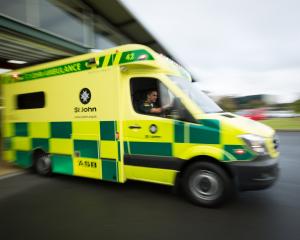
A document released under the Official Information Act (OIA) revealed two long-range acoustic devices (Lrads) were deployed on the last day of the protest, March 2.
Other documents show there was a rush to change police rules so pepper spray could be used in crowd control situations, and new products were procured for the purpose.
The anti-mandate protest ended in violence when hundreds of police officers, many in riot gear and supported by a helicopter, clashed with crowds of protesters who lit fires and threw cobblestones.
That was the only day of the protest where the two Lrads, operated by members of the police negotiation team, were used.
One was deployed on the roof of the Parliament building and another in Aiken St.
The Lrad was described by police in the document as a "long-range communication device for targeted communication" which also had the ability to produce an "aversion tone".
The devices are effectively powerful speakers, either handheld or mounted on a vehicle or tripod, that can be used to disperse crowds or as a powerful loud hailer.
The document states police have 17 Lrad units, bought incrementally since 2016, and a tactical options report must be completed for use of an Lrad.
Manufacturer’s specifications for the Lrad model 100x used by police say the devices can project 140dB, about the sound level level of a gunshot, to a maximum range of 600m.

It is understood the deployment on March 2 was the first use of the Lrads to disperse a crowd in New Zealand.
The information dump also revealed 104 sponge rounds were fired on the day by nine officers, members of the elite special tactics group.
Other documents released include emails between police and Sabre Red, the supplier of pepper spray to police, which showed police scrambling to procure more pepper spray from February 15, following the first unsuccessful attempt to remove protesters on February 10.
Instructions for the use of pepper spray in a crowd were also changed, the new rules coming into force the day before officers moved in on protesters.
A new crowd control pepper spray product with a higher capacity, Sabre Red Mk 9, was also added to the list of approved products.
Instead of pepper spray not being used in crowded situations "as a general rule", the new rules said pepper spray could be utilised against more than one person at a time "where the circumstances justify its deployment".
The obligations of police to provide aftercare, by decontaminating and avoiding positional asphyxia, were also changed from "must" to "must if the circumstances allow".
The emails also showed police expressed interest in an even higher capacity capacity pepper spray from Sabre Red, the Mk 60, described as a "high volume streamer".
The documents also showed between February 9 and March 13 171 police staff were deployed from the Southern police district to Wellington as part of the operation to remove the protesters.












